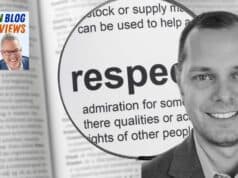 Dr. W. Edwards Deming‘s last book was The New Economics for Industry, Government, Education
Dr. W. Edwards Deming‘s last book was The New Economics for Industry, Government, Education. In Chapter 5, Deming writes, “Transformation in any organization will take place under a leader. It will not be spontaneous.” A leader “possesses knowledge, personality, and persuasive power.”
How does a leader accomplish transformation?
- The leader has a theory and “understands why the transformation would bring to his organization and to all the people that is organization deals with.”
- The leader “feels compelled to accomplish the transformation as an obligation to himself and to [the] organization.”
- The leader is practical, with “a plan, step by step, and can explain it in simple terms.”
Deming writes about the balance between head and heart, that the “head is not enough.”
The first point about understanding WHY is familiar to those who have read the Toyota Production System literature. Taiichi Ohno wrote that we must “Start from need,” which sounds like understanding the reason why change is needed. Shigeo Shingo wrote that “We have to grasp not only the Know-How but also ‘Know Why'”, if we want to master the Toyota Production System (TPS).”
I like how Deming emphasizes the understanding of benefits to ALL the “organization deals with.” This would include customers, employees, suppliers, the community – a similarly broad focus that Toyota takes in describing their “respect for people” principle.
In Chapter 6, Deming writes about the “role of a manager of people” in an organizational transformation effort. Forgive the gender-specific nouns… this is verbatim from Deming's book.
- A manager understands and conveys to his people the meaning of a system. He explains the aim of the system. He teaches his people to understand how the work of the group supports these aims.
- He helps his people to see themselves as components in a system, to work in cooperation with preceding stages and with following stages through optimization of the efforts of all stages toward achievement of the aim.
- A manager of people understands that people are different from each other. He tries to create for everybody interest and challenge, and joy in work. He tries to optimize the family background, education, skills, hopes, and abilities of everyone.This is not ranking people. It is, instead, recognition of differences between people, and an attempt to put everybody in position for development.
- He is an unceasing learner. He encourages his people to study. He provides, when possible and feasible, seminars and courses for advancement of learning. He encourages continued education in college or university for people that are so inclined.
- He is coach and counsel, not a judge.
- He understands a stable system. He understands the interaction between people and the circumstances they work in. He understands that the performance of anyone that can learn a skill will come to a stable state – upon which further lessons will not bring improvement of performance. A manager of people knows that in this stable state it is distracting to tell the worker about a mistake.
- He has three sources of power:
- Authority of office
- Knowledge
- Personality and persuasive power; tact
A successful manager of people develops Nos. 2 and 3; he does not rely on No. 1. He has nevertheless obligation to use No. 1, as this source of power enables him to change process – equipment, materials, methods – to bring improvement, such as to reduce variation in output. He in authority, but lacking knowledge or personality (No. 2 or 3) must depend on his formal power (No. 1). He unconsciously fills a void in his qualifications by making it clear to everybody that he is in a position of authority. His will be done.
- He will study results with the aim to improve his performance as a manager of people.
- He will try to discover who if anybody is outside the system, in need of special help. This can be accomplished with simple calculations, if there be individual figures on production or on failures. Special help might be only simple rearrangement of work. It might be more complicated. He in need of special help is not in the bottom 5 percent of the distribution of others; he is clean outside that distribution.
- He creates trust. He creates an environment that encourages freedom and innovation.
- He does not expect perfection.
- He listens and learns without passing judgment on him that he listens to.
- He will hold an informal, unhurried conversation with every one of his people at least once a year, not for judgment, merely to listen. The purpose would be development of understanding of his people, their aims, hopes and fears. The meeting will be spontaneous, not planned ahead.
- He understands the benefits of cooperation and the losses from competition between people and between groups.
Point #7 reminds me of the Toyota expressed, shared by Gary Convis, John Shook, and others that states “lead as if you have no authority.” This doesn't mean completely giving away your authority… it means not relying on that formal authority.
Point #5 has also been taught to me as “be a coach, not a cop.”
Point #3 emphasizes the idea that people are not robots. We are complex individuals and effective leaders and managers realize that.
Point #4 reminds me of my friend Sami Bahri, DSS – author of the book Follow the Learner: The Role of a Leader in Creating a Lean Culture. It's better to be a “learn it all” than a “know it all.”
Lots of great stuff here in Dr. Deming's work.
Please scroll down (or click) to post a comment. Connect with me on LinkedIn.
Let’s work together to build a culture of continuous improvement and psychological safety. If you're a leader looking to create lasting change—not just projects—I help organizations:
- Engage people at all levels in sustainable improvement
- Shift from fear of mistakes to learning from them
- Apply Lean thinking in practical, people-centered ways
Interested in coaching or a keynote talk? Let’s start a conversation.










Thanks for posting, Mark. Great information that I can use as I transition into a new role.
Hi Mark
Like you I agree with much of what Dr. Deming taught. Though having been a leader, and having been lead by good leaders, there are a couple of the points in the above list that are a little to black and white for reality.
Point 5, yes and good leader tries to avoid making more judgements than required, but sooner or later you have to make them there is just no way around them. Though when you judge you do so in fairness and equity, having listened to all the sides, and consider how your judgement decision will affect the organization as a whole. It is just a fact that sooner or later certain individuals will get into conflict, that sooner or later concise will not be reached, or sooner or later available resources will limit the options; when any of these happen a leader has to look at the current information and make a judgement call, if they do not the organization will be worse off.
Point 12 it would be nice to never end up in the position of having to judge the person, that you could stick to just judging the facts, but people are different, and unfortunately sometimes people are the real problem, when that happens you better be willing and able to recognize it and deal with them, or the organization will suffer for it. It may surprise some people, but the majority of people that are actual problems are in fact popular, they use that popularity to take advantage, which if a leader tolerates it will result in a steady decline in performance.
On point 7, I was taught to look at it from a slightly different point of view. A leader, coach, manager is in fact a dictator; the authority of the position makes them one. A good benevolent dictator is one that has enough knowledge that other cannot lie to them so they can listen and take advice, they have to ability to apply what they know so others have to perform, and because they show respect to those who are honest and perform their functions, they earn the respect of those they lead. Bad dictators have nothing but power and it last only until someone stronger arrives in the scene. It may not sound pretty , but it is honest, great leaders use their power only when actually required, they prefer to work with those around them and persuasion over force, it wastes less resources.
If a leader never takes a stand, and organization will never go anyplace, because there will be no focused direction, and no one will keep it heading the right way. Though it would be nice to never have to resort to taking forceful action the reality is any leader will have too sooner or later, and the sooner they show people they will act in a proper manner the less frequently they will have too. Leaders are like parents, you will be tested, and if you want harmony and stablility you better handle those early tests quickly and decisively.
As to point #5 — some managers do nothing but judge.
I think part of Deming’s point is that a manager has an obligation to help their employees do a good job, not just judge their performance once a year in a formal review.
You’re right, great leaders use formal power only when actually required.
#7 really hit home for me. I’ve had innumerable managers who only had authority of office. This was often the case in the military where an officer would be placed in a position of authority without any knowledge of the tasks being performed by his workers. But by no means is it limited to the military. On the other hand, my best bosses never relied on (or mentioned) their authority. Their knowledge and people skills were authority enough.
Chapter 6, “Management of People,” usually loses the competition to “Management of Numbers,” the latter being easier and far less of a challenge. On the bright side, items 1-14 capture like Art Byrne’s approach to management (at Wiremold and elsewhere) which, in turn, led to incredible numbers. “Management of People” requires deep curiosity and a strong commitment to learning (what we would expect from true leaders) that “Management of Numbers” does not (what we would expect from people enamored with titles).
One thing I remember about my brief time with Dr. Deming was his selective use of the word “leader” and “leadership”. It’s not uncommon for people to think of senior management as “leaders” as middle managers as “managers” and as the people doing the work as “associates”.
This is not how I remember Dr. Deming talking about this. He chose carefully who he would cite as having leadership quality or being a leader. Most people were “managers of people” (and doing it quite poorly, he would add … but how could they know?)
He almost always emphasized how many people take joy in their work (very few) and placed the blame squarely on the “prevailing style of management”, including not understanding variation and how to react to it.
Soapbox time – most managers today have not learned about variation, they did not see the red bead factory. And if they did learn about variation, it was put in a container called “six sigma” or “statistics”. They don’t understand that the most important application of “understanding variation” is when you don’t have figures (in the management of people). But how could they know this? It’s not being taught is schools. It’s not being taught in companies. And most companies that are trying to apply what is being called “lean” are not exposed to this important concept.
[…] Dr. Deming’s “Role of a Manager of People” by Mark Graban – quoting Dr. Deming “A manager understands and conveys to his people the meaning of a system. He explains the aim of the system. He teaches his people to understand how the work of the group supports these aims.” […]
[…] Dr. Deming’s “Role of a Manager of People” (1,181) […]
[…] way of several layers of reading this morning (EMS Safety Culture and LeanBlog) I reflected on W. Edwards Deming’s statements on the sources of a leader’s power. […]
[…] John focused on the importance of senior executives leading management imrovement efforts. Mark Graban analyzed Deming’s management philosophy. Anshuman Tiwari added a bit of controversy to the […]